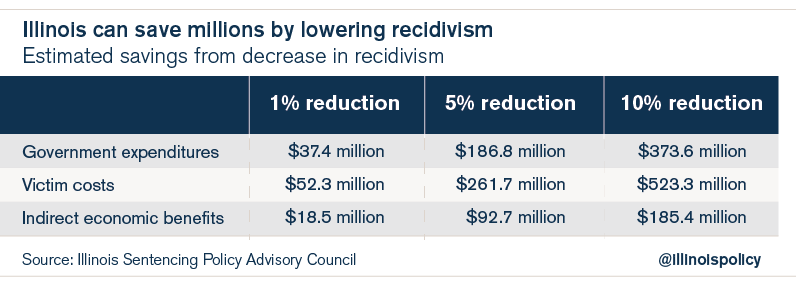The initiation
Tony’s initiation happened when he was 12.
Growing up on Chicago’s South Side near 69th and Dante Avenue, gangs such as the Black P. Stone Nation and the Gangster Disciples started recruiting children as early as fifth grade.
The gang initiation marked Tony’s first experience with drug and alcohol abuse – the beginning of a 16-year battle with addiction.
Despite those circumstances, Tony was the president of his grammar school and high school, where he flourished in math and architectural drafting classes. After graduating he went on to receive a certificate in accounting and began his career in the corporate world. But his addiction remained.
To feed that addiction, Tony committed a felony, and completed a 30-month probation in 1990.
“When I was addicted I was a completely different person,” Tony said. “I made mistakes as a young person coming up. There’s no question about that.”
But now, 26 years after paying his debt to society – not to mention nearly three decades of sobriety – Tony’s record still haunts him. A married father of two college-aged children, he’s been stonewalled from gainful employment by a broken system.
The fight
In August 2013, decades into Tony’s career in insurance and professional billing, he took steps to better himself by applying for an insurance broker’s license.
After being affected by downsizing at his previous employer, the Safer Foundation helped Tony land a new job with a health insurance company in Chicago. He needed the license for his new role.
Tony worked for three months before he got some bad news.
“When I got the letter from the [licensing] board, all I could do was cry,” he said. The state rejected his application for a professional license because of his past offense.
For years, Tony had been trying to clear his name.
A judge sealed his record, he received a certificate of good conduct and he was recommended to have his record expunged by a former lieutenant governor, an Illinois congressman, an Illinois state representative and a judge.
Gov. Rod Blagojevich denied his application twice. Gov. Pat Quinn denied him once.
Most people would think those steps, along with Tony’s success in raising his family, would be enough to prove his worthiness of a license. And the insurance board agreed. But the director of the state’s department of insurance rejected the board’s recommendation.
Ever since his rejection, Tony has struggled to find consistent work.
“I built a life for myself and my family,” he said, “but it’s all been taken away.”
The facts
In Illinois, nearly half of offenders released from prison each year will have returned three years later.
Research shows one major reason why so many former offenders return to crime is lack of work. But while one of the most salient predictors of re-offending is whether ex-offenders can find a decent job, their prospects of doing so are weak.
Survey data suggest as many as 60 to 75 percent of former offenders are unemployed a year after their release.
Since February 2012, Tony has sent hundreds of job applications and sat for dozens of interviews.
“One interviewer told me I knew more about his company than he did,” Tony said. He still didn’t land the job.
While Tony succeeded in creating a long, well-paying career, he, like thousands of others, is now facing barriers to self-sufficiency years after serving his sentence.
The effects of a broken criminal-justice system – namely, the same individuals cycling in and out of jail ad nauseam – come with enormous fiscal and social costs.
Each time an ex-offender ends up back behind bars, it costs the state an average of more than $118,000 — a cost borne by taxpayers, the victim of the crime and the state economy as a whole, according to a report by the Illinois Sentencing Policy Advisory Council, or SPAC.
Assuming Illinois’ recidivism rate stays the same, taxpayers themselves will pay approximately $5.7 billion for recidivism costs over the next five years.
Recidivism is also a major public safety concern. Illinoisans who re-offend commit a majority of crimes in the state, according to SPAC.
The hidden victims of this crisis are children, nearly 70,000 of whom currently have a parent in an Illinois prison. This means there are likely hundreds of thousands of children in Illinois whose parents live with a felony record. These children are more likely to drop out of school, experience substance-abuse problems and engage in criminal behavior as adults.
If there is a silver lining of these high costs, it’s that sensible changes can produce better outcomes for ex-offenders who want to become productive members of society, while saving taxpayers millions.
If the recidivism rate fell by 5 percent, taxpayer savings would total nearly $187 million over nine years, along with $93 million in avoided economic losses and $262 million in victimization costs not incurred.

The action
Illinois politicians have a wealth of options when it comes to improving the state’s criminal-justice system, especially when looking at offenders’ lives after release.
Important re-entry reforms currently before the General Assembly include:
- Sealing expansion (House Bill 6328): Allow most nonviolent offenders the chance to apply to have their criminal records sealed as soon as they successfully complete their prison sentences or parole, if applicable.
- Business-liability reform (House Bill 5533): Protect businesses from lawsuits based solely on hiring an employee with a criminal record.
- Occupational-licensing reform (House Bill 5973): Remove legal barriers that prevent former offenders from working in most licensed occupations.
The fiscal and societal costs of unemployment and underemployment among ex-offenders are staggering. Tools to address those costs are available. It’s time to act.
“You would think that I would qualify to have a second chance somewhere, from somebody, for something,” Tony said.
“For whatever reason it’s just fallen on a deaf ears.”